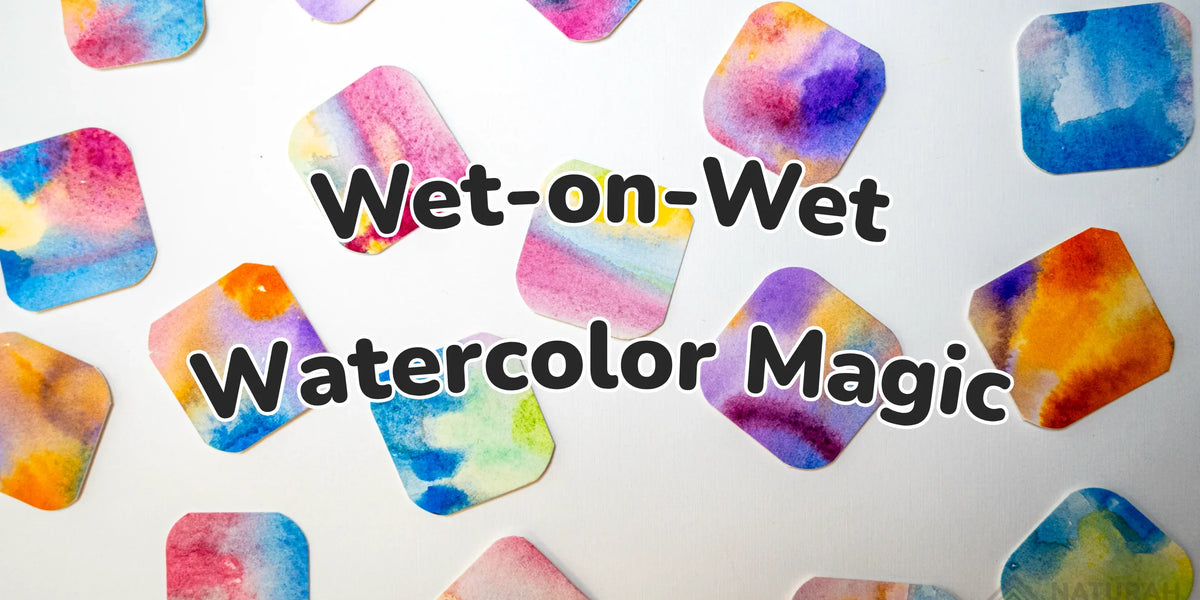Watercolor for Beginners: Wet-on-Wet
Watercolor for Beginners: Wet-on-wet watercolor painting. Learn how moisture timing and paint flow create dreamy, atmospheric effects that make watercolor so enchanting.

Wet-on-wet is perhaps the most magical watercolor technique. Often, it's the satisfaction of seeing the colors blend with this technique that makes beginners fall in love with the medium.
What is Wet-on-Wet?
This technique involves applying wet paint to wet paper (also combining wet paints), creating those dreamy, flowing effects that watercolor is famous for. It's where you discover the true personality of watercolor as colors bloom and dance across your paper.
 How to Master Wet-on-Wet
How to Master Wet-on-Wet
- Start with clean water on your brush and wet your paper in the area you want to paint
- While the paper is still damp, touch your loaded brush to the surface
- Watch as the pigment flows and blooms naturally
- Control the flow by adjusting the wetness of your paper and the amount of paint on your brush
 The Perfect Timing
The Perfect Timing
The key to wet-on-wet is finding your perfect timing. More water creates beautiful, expansive blooms, while less water gives you more control over the flow. Practice on small squares of paper until you develop an intuition for the moisture level that creates the effects you love.
High-quality pigments, like those in Naturah handcrafted watercolor sets, flow smoothly and beautifully, with controllable blooms that respond to your touch.
Perfect Applications
Wet-on-wet is perfect for: Skies, water, flower petals, and any area where you want soft, blended transitions that seem to glow with inner light.
Remember, watercolor has a mind of its own, and the most beautiful effects often happen when you partner with the medium and let its natural flow guide your creativity.



Be the first to comment on this article!